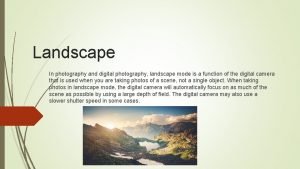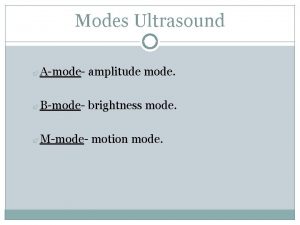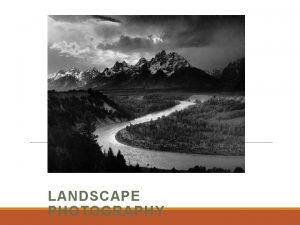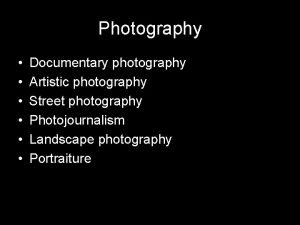Landscape In photography and digital photography landscape mode








- Slides: 8

Landscape In photography and digital photography, landscape mode is a function of the digital camera that is used when you are taking photos of a scene, not a single object. When taking photos in landscape mode, the digital camera will automatically focus on as much of the scene as possible by using a large depth of field. The digital camera may also use a slower shutter speed in some cases.

Portrait In photography and digital photography, portrait mode is a function of the digital camera that is used when you are taking photos of a single subject. When taking photos in portrait mode, the digital camera will automatically uses a large aperture to help keep the background out of focus by using a narrow depth of field so the subject being photographed is the only thing in focus.

Depth of field When we adjust our camera's lens to focus on a subject it will only achieve perfect focus at one particular distance; anything in front or behind this point will be blurred to a greater or lesser degree. APERTURE The aperture determines the diameter of the beam of light that the lens admits. The wider the aperture, the wider the beam of light. A wider beam is more susceptible to depth of field effects than a narrower beam.

Framing is the technique of drawing attention to the subject of your image by blocking other parts of the image with something in the scene.

Leading line A leading line is a line in the picture that leads your eye from one part of the scene to another. The strongest composition is usually achieved when the lines lead your eye towards the main subject or focal point within the scene.

The exposure triangle is a common way of associating the three variables that determine the exposure of a photograph: aperture, shutter speed, and ISO. One must balance all three of these to achieve a desired result.

The rules of third The rule of thirds is a "rule of thumb" or guideline which applies to the process of composing visual images such as designs, films, paintings, and photographs. The horizon sits at the horizontal line dividing the lower third of the photo from the upper two-thirds.

Zoom-in Framing Landscape Depth of field Fast shutter speed














